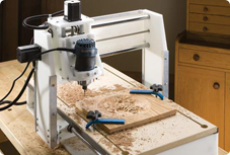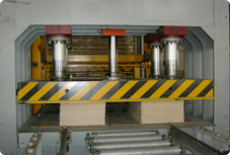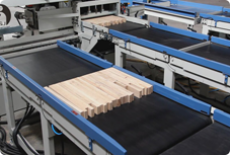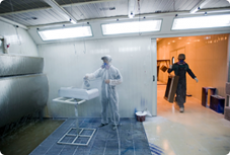wood
-

CNC Machines now allow you and your business to create 3D woodcarving products with a personal computer. Our CNC Machines use either Mac or PC and can also have a flash drive plugged in, to avoid moving computers around. The CNC woodworking Machines also come with their own software to convert images and designs. Woodworking in 3D has never been easier with a CNC Machine from Woodcraft.
-

The hydraulic press depends on Pascal's principle: the pressure throughout a closed system is constant. One part of the system is a piston acting as a pump, with a modest mechanical force acting on a small cross-sectional area; the other part is a piston with a larger area which generates a correspondingly large mechanical force. Only small-diameter tubing (which more easily resists pressure) is needed if the pump is separated from the press cylinder.
Pascal's law: Pressure on a confined fluid is transmitted undiminished and acts with equal force on equal areas and at 90 degrees to the container wall.
-

Lamination is the technique of manufacturing a material in multiple layers, so that the composite material achieves improved strength, stability, appearance or other properties from the use of differing materials. A laminate is usually permanently assembled by heat, pressure, welding, or adhesives.
Laminated wood is made from many thin strips of wood. Often these strips are cast-offs or mixed from a variety of different types of wood. These strips of wood are carefully sanded down so that the surfaces are smooth, and then they are glued together under pressure so that a single, cohesive board is created from the mixture of woods. If plywood is being made, then the grains of the strips will be at right angles to each other, whereas for other sheets of laminated wood, the grains of the various layers will be parallel to one another. For boards that must be more structurally sound, more layers are added to increase the thickness.
-

A polyurethane (PUR and PU) is polymer composed of a chain of organic units joined by carbamate (urethane) links.
Polyurethane polymers are formed by combining two or several bi- or higher functional monomers. One contains two or moreisocyanate functional groups (with formula –N=C=O) and the other contains two or more hydroxyl groups (with formula –OH). The alcohol and the isocyanate groups combine to form a urethane linkage:
ROH + R'NCO → ROC(O)N(H)R' (R and R' are alkyl or aryl groups)
This combining process, sometimes called condensation, typically requires the presence of a catalyst. More complicated monomers are also used.Polyurethanes are used in the manufacture of flexible, high-resilience foam seating; rigid foam insulation panels; microcellular foam seals and gaskets; durable elastomeric wheels and tires; automotive suspension bushings; electrical potting compounds; high performance adhesives; surface coatings and surface sealants; synthetic fibers (e.g., Spandex); carpet underlay; and hard-plastic parts (e.g., for electronic instruments).






